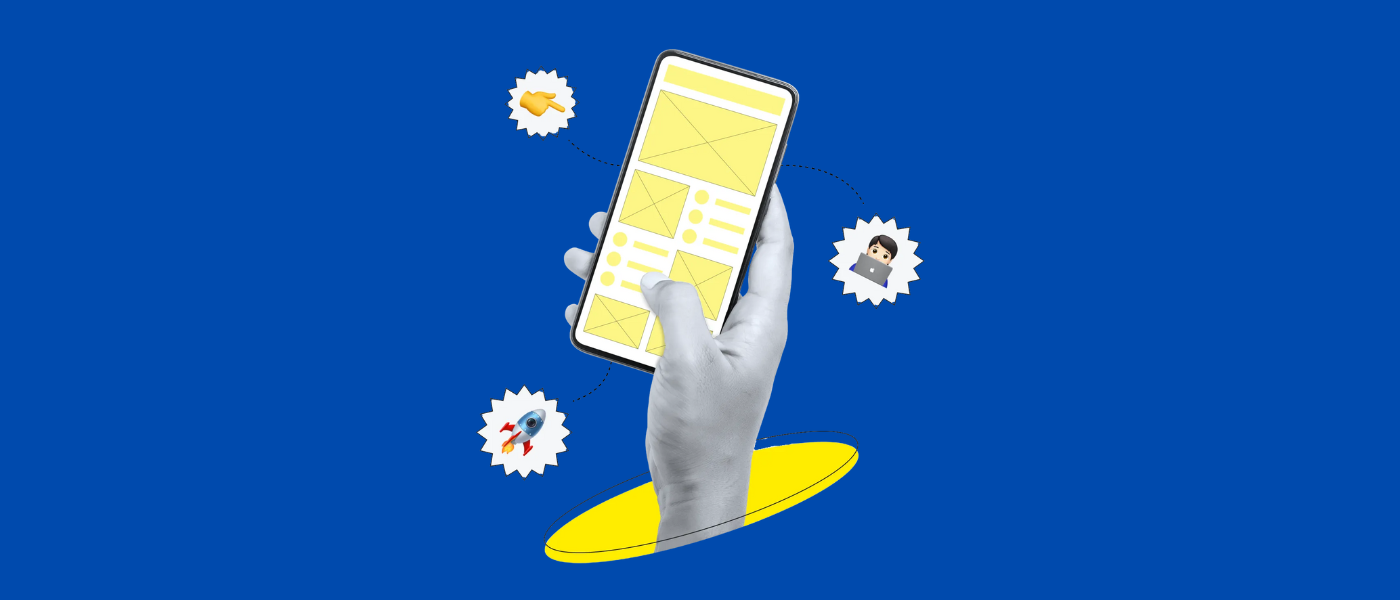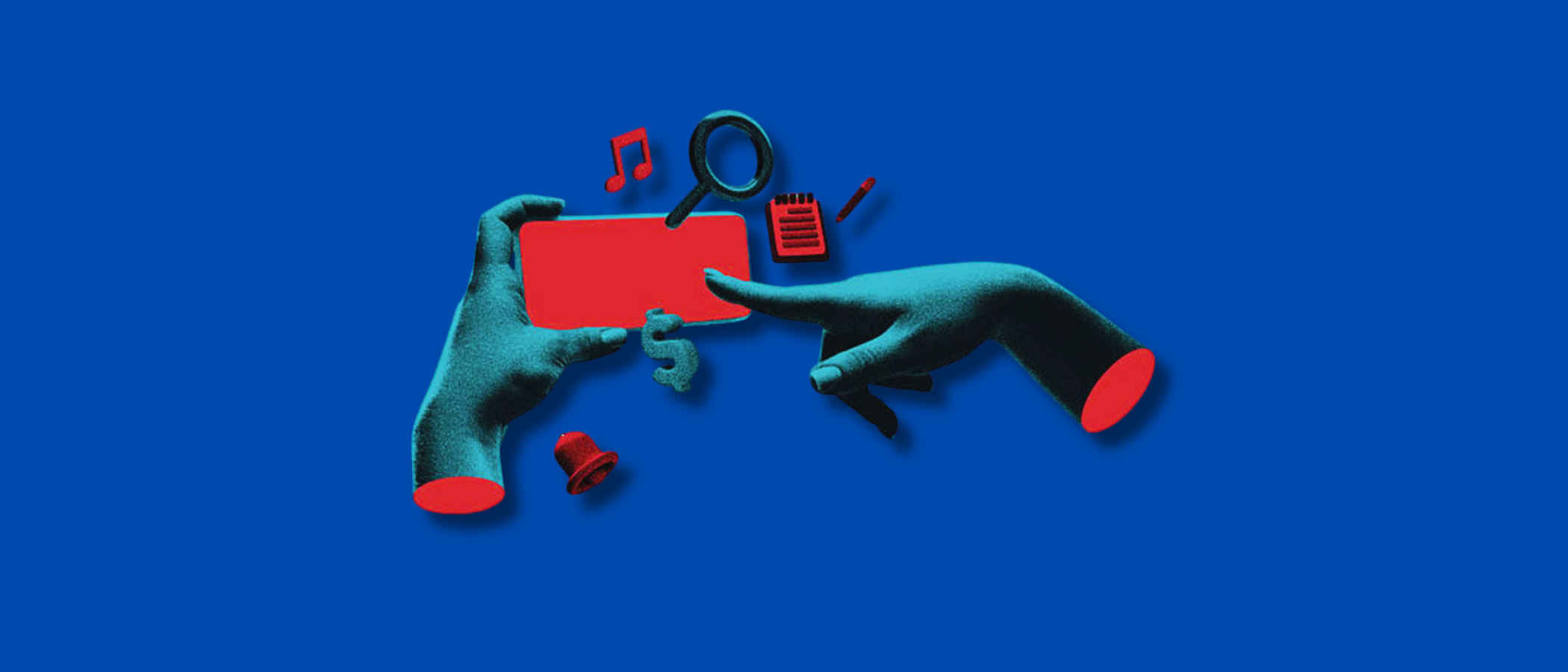Introduction
Imagine this. You are constructing a house. Would it be your decision to consider locks, smoke detectors, and security cameras only after the house is built? Of course not. You’d plan for these things from the start.
That is exactly what Security by Design means for mobile apps.
Instead of creating an app first and adding security features later you build privacy and security into every single decision from day one. It sounds simple, right? But here’s the thing most developers still don’t do this.
Why Should You Care?
Can I share with you some fact that might surprise you? The global consumer mobile security apps market is currently valued at US$5,595.8 million in 2025. What about 2033?
It is anticipated to be as high as USD 33,567.628 million. That is an increase of 25.10% per year.
Such figures reveal an important message to us. Customers are terrified of their data. They are concerned about their privacy. Also, they are ready to spend on such apps that keep them safe.
But here’s what those statistics don’t tell you: building a secure app isn’t just about following market trends. It is all about doing the right thing for your users.
Users trust your application with their personal information when they download it. Their photos. Their messages. Sometimes, even their financial details.
Remember when apps would ask for every permission possible? Access to contacts, camera, location, microphone, everything? Users would just tap “accept” without thinking twice.
Those days are gone.
Today’s users are smarter. They question why a calculator app needs access to their contacts. They delete apps that feel invasive. They leave one-star reviews. And honestly? They’re right to do so.
Building a privacy first app isn’t optional anymore. It’s essential for survival.
The good thing is? If you are reading this, then you are out in front. You recognize that security can not be some thing that is performed as an afterthought.
You want to make some thing that is constructed with consumer privacy in mind from day one.
In this guide, you may discover ways to expand functions that keep the customers secure while giving them complete functionality. How not to make the same mistakes that even big companies are making.
Most importantly? You will get to know that it is not necessary when thinking of creating secure apps. If you do it the right way, it will become like a habit. As in putting on a seatbelt before driving.
Ready to build something your users can trust? Let’s get started.
What is Security by Design?
Security by Design is essentially about ensuring that security and privacy are the core principles of your mobile app from day one and not something that you merely add for show when a problem comes up.
It’s like creating your app with a solid security base so that you don’t have to run around fixing leaks after the app launch. The idea is to anticipate risks even before the first line of code is written and guarantee that everything you make is as secure as possible for the users.
Such a strategy implies data minimization; only the data that is absolutely necessary is collected, neither more nor less.
The concept is to implement end-to-end encryption so that the sensitive data is safe, and also to ensure that users have complete control over their data through user-friendly privacy settings and the option to opt out whenever they want.
The use of secure authentication (such as multi-factor or biometrics) is yet another way to keep the system safe.
To sum it up, Security by Design is essentially about creating apps that are built around the concept of trust. It is not only about performing compliance checks or anticipating a disaster.
The point of it is to guarantee that your users will feel safe and that their data will always be handled in a respectful manner. Security and privacy should not be merely added as separate features; they should be an integral part of the app’s make-up.
Why Privacy First Apps Matter More Than Ever
Let us confront an uncomfortable fact first. Just in the previous year, over 2 billion personal records were laid bare due to mobile app breaches. It is not a mistake in typing. Two billion.
Consider your phone for a moment. How many applications do you have? Twenty? Fifty? Each one knows something about you. Your shopping habits. Your exercise routine. Who you talk to. Where do you go?
Now imagine all that information leaked online. Scary, right?
Something interesting happened over the past few years. People started paying attention.
Your aunt who barely knows how to send a text? She’s now asking why Facebook needs her location.
Your teenage cousin is putting a piece of tape over his laptop camera to block it. Your grandma is asking what cookies are (and we are not referring to the chocolate chip ones).
This shift changes everything for app developers.
Users now actively look for privacy features before downloading apps.
They read reviews specifically mentioning data protection. They choose apps that respect their privacy over ones with slightly better features.
In fact, 86% of users say data privacy is a “growing concern” for them. And 90% want more control over their data.
These aren’t just statistics. They’re your future users telling you exactly what they want.
The Business Case (Yes, Privacy Makes Money)
Here’s something that might surprise you. Privacy first apps actually make more money in the long run.
How? Let me explain.
- Initially, you keep away from expensive data breaches. On average, a data breach is going to cost a company $4.45 million. Such an amount is sufficient to destroy any startups that do not have a large reserve of capital. But when you build security from the start, you dramatically reduce this risk.
- Second, users stick around longer. People trust them. They recommend them to friends. They leave positive reviews.
- Third, you save on compliance costs. New privacy laws pop up constantly. If your app is already privacy-first, you won’t scramble to meet new requirements. You’re already there.
The Trust Factor
Trust is weird. It takes years to build and seconds to destroy.
WhatsApp skilled a similar situation, pretty a good deal. When they modified their privacy policy in 2021, the migration of customers to Signal and Telegram changed into so massive that it appeared like it had passed off overnight.
On the flip side, look at Signal. They built their entire brand around privacy. No ads. No data collection. Just secure messaging.
Privacy is not only a feature. It is a commitment to your users.
What if you neglect the aspect of privacy?
I can tell you the story of a fitness app that had to learn this lesson through a painful experience.
They collected everything. Heart rate data. GPS routes. Sleep patterns. Exercise schedules. They thought more data meant better features. They were wrong.
Hackers breached their system. Suddenly, everyone knew when users left their homes for morning runs. Their exact routes. When their houses were empty. The company faced lawsuits. Bad press. They shut down within six months.
This isn’t a rare story. It happens weekly.
Governments aren’t playing around anymore.
Europe’s GDPR can fine companies up to 4% of global revenue. California’s CCPA lets users sue companies directly. China, India, and Brazil all have strict new privacy laws.
Ignore these regulations? You’re not just risking fines. You’re risking your entire business.
But here’s the thing. When you build privacy-first, compliance becomes much easier. You’re not scrambling to meet requirements. You’ve already exceeded them.
Creating privacy first apps in 2026 is not about being trendy. It is about staying alive.
Users demand it. Laws require it. The market rewards it.
The question isn’t whether you should prioritize privacy. It’s whether you can afford not to.
Core Principles of Security by Design
- Start With Privacy as Default
Here’s a simple rule. When someone downloads your app, it should be private by default.
No hidden settings to find. No complicated menus to figure out. Privacy should just… work.
Think about it like this. When you purchase a automobile, the doors come locked. You don’t have to request locks as an add-on. The identical common sense applies to your app.
Users should not have to grow to be protection specialists to guard their records.
What does this appear like in exercise? If your app has a profile, make it non-public by default. Let users select to go public, no longer the alternative manner around. If you acquire analytics, make it decide-in, not choose-out.
- Collect Only What You Need
Every piece of data you collect is a responsibility. It’s something you need to protect. Something that could be stolen. Something that could hurt your users if it gets out.
So here’s a radical idea. Don’t collect it unless you absolutely need it.
Does your weather app really need access to contacts? Does your flashlight app need location data? Probably not.
Before collecting any data, ask yourself three questions:
- Why do I need this?
- What will I do with it?
- Can my app work without it?
If you can’t answer clearly, don’t collect it. Simple as that.
- Give Users Real Control
Control isn’t just about on/off switches. It’s about genuinely empowering users to manage their data.
Users should know what you’re collecting. They should understand why. And most importantly, they should be able to change their mind. Want to delete their account? Make it easy. Want to download their data? Give them a button.
Netflix does this well. You can download everything they know about you with a few clicks. You can delete your viewing history. You can manage exactly what data they keep.
Be like Netflix. Make control simple.
- Build Security Into Every Layer
Security isn’t one thing. It’s everything.
It’s like home security. You don’t just lock the front door. You lock the windows. You have good lighting. Maybe a security system. Perhaps a dog. Each layer adds protection.
Your app needs the same approach. Encrypt data when you store it. Encrypt it when you send it. Use secure authentication. Validate all inputs. Update dependencies regularly.
No single security measure is perfect. But multiple layers? That’s hard to beat.
- Think Like an Attacker
This sounds dark, but it’s necessary.
Before releasing any feature, ask yourself: “How could someone abuse this?”
That innocent comment section? It could be used for harassment. That location sharing feature? It could enable stalking. That public profile? It could expose personal information.
You’re not being paranoid. You’re being responsible.
Plan for Things Going Wrong
Here’s an uncomfortable fact. Perfect security doesn’t exist.
Even the best apps have vulnerabilities. Even careful developers make mistakes. So what matters isn’t being perfect. It’s being prepared.
Have a plan for breaches. Know who to contact. Prepare template communications for users. Set up monitoring to detect problems early.
Hope for the best. Plan for the worst. Your users are counting on you.
Keep It Simple
Complex systems break in complex ways.
The more complicated your security, the more likely something goes wrong. Or worse, the more likely your team implement it incorrectly.
Choose boring, proven solutions over fancy new ones. Use established security libraries instead of writing your own. Follow standard practices rather than inventing new approaches.
Simple. Boring. Effective. That’s the goal.
Key Features to Implement for Privacy First Mobile Apps
A privacy first mobile app is a project where developers deliver features that secure user data and make customers feel trustworthy. Here’s an overview of the main functionalities to integrate:
1. Data Encryption (Always)
If one pictures encryption in the digital world, one can think of it as a lock for the user’s data.
In case it is data stored on a device or sent to the internet, having everything encrypted makes sure that even if hackers get the data, they are not able to understand it.
Encryption should be a non-negotiable part of the app design and crypting mechanisms have to be provided for data at rest (stored) and data in transit (moving).
2. User Data Control
Privacy-first-apps that are implemented in the best way possible provide the users with control over their data. Hence, they are allowed to decide what information they will share and when to do it.
Among these stands out the simple features, such as letting users be part of something or not (for example, location tracking) and offering a clear opt-out in case users change their decision.
A prominent feature is that when they want, they can withdraw their data from your system with ease.
3. Anonymization & Pseudonymization
When data is collected, it is advisable to anonymize or pseudonymize it as much as possible. In effect, this means that personal information is removed, or introduced tokens are completely anonymous.
In this way, privacy is not compromised, and the app can still work and get the necessary data.
4. Secure Authentication (Because Passwords Aren’t Enough)
We all know that passwords are no longer sufficient.
Thus, in order to make the app more secure, the number of ways to verify a user’s identity is increased by MFA (multi-factor authentication) a brief security step combining a code in a message or a fingerprint scan.
Together with that, biometric authentication (such as facial or fingerprint recognition) is safer plus more comfortable for users.
It is done in such a way that hackers can hardly get access to accounts but users’ lives are not made difficult.
5. Privacy-First Analytics
User behavior is a good source of what the company is after, but this should not be done in a manner that violates users’ privacy.
The selection of privacy-centric analytics tools must be made in such a way that they put an emphasis on aggregated data and not that of individual users.
If it is unavoidable that user data be used for analytics, then the data has to be anonymized or pseudonymized prior to any other operations.
6. Minimal Permissions
The moment a user downloads your app, the latter is in charge of only asking for the least necessary permissions.
If in any case, you are not required to have access to the contact list, microphone, or GPS of a person, then don’t request it.
Showing respect towards users by not overstepping the boundary and merely asking for permissions that are necessary for the app’s main tasks is the essence of privacy preservation.
7. Regular Security Updates
Until then, security updates are a must, even with a strong app design. With the arrival of new hacks and vulnerabilities, the updating schedule should remain unaltered, vigilant, and prompt.
The latter being inclusive of everything from updating app codes to installing patches for the third-party libraries that you have used.
Your app’s security must be kept up to date alongside that of the users who entrust it to you.
How to Begin Creating Privacy-First Apps Today
Initially, the idea of developing a privacy-focused mobile app might be intimidating, however, the truth is that you can simply proceed step by step.
This is a straightforward and beginner-friendly guide that will help you find your way:
1. Change your perspective: Put Privacy First, Always
The very first thing to do is to alter your perspective when thinking about app creation. Privacy should not merely be a feature; rather, it should be a company’s main value.
From day one, you have to give the highest priority to user privacy in each decision that you make, whether it is about the collection of data, storage, or security.
Before doing anything else, ask yourself this question: “How can I protect my users’ data?”
2. Go for Safe and Privacy-friendly Toolsets
Be deliberate when choosing the bases for your app, libraries, and services for your product that comes from the third party.
Check if the security and privacy of the tools are the main goals.
For instance, adopt the encryption library that is constantly supported and reviewed by the community.
Whatever analytics tools you decide to use should not, under any circumstances, allow the leakage of user data, and give preference to privacy friendly methods if they are available.
3. Set up Data Minimization
The general rule should be to gather only the essentials. If the application needs no access to the user’s location, contacts, or camera, don’t get it.
The bad habit of overloading with data will surely create dangers overtime.
Basically, by thinking through how you can provide more value to your users, you will realize that you haven’t quite needed the data all along.
Ensure that your app is “lean” when it comes to data gathering and tell the truth about why and when you need data.
4. Get Started With Solid Authentication
MFA is definitely the next step after a simple password. Don’t hesitate to put the multi-factor authentication (MFA) in place from day one.
If you want to develop security even more, you can offer the user biometric authentication (for example, fingerprint or facial recognition).
The best case scenario for a user is to have multiple levels of security, so the more difficult it is for a hacker, the safer it is for the user.
5. Keep Transparency as Your Top Priority
The biggest thing you could ever do is to be straightforward and truthful with your users.
The data being used is the main thing to inform them about and they should be given the freedom to decide what to do with it.
Make sure privacy settings are always available, and consent for the gathering of sensitive data should never be overlooked.
The ultimate goal here is that users do not feel that their information is being handled without their knowledge, but rather that they have control over their own data.
6. Always Upgrade and Test Your App
Your app must be kept safe not only at release time, but it is an ongoing security obligation.
Unleashing the latest version of your application regularly to seal the holes and make available the new privacy features is a must.
Routine security audits and penetration testing should be implemented to constantly stay in-the-know with the security challenges that you face.
Never forget that the app compromise with a privacy-first approach will be only successful if they are updated with the industry’s best practices for security.
7. Make Sure You Are Always Up to Date With Privacy Laws
Be ahead of privacy regulations and best practices. Privacy rules such as GDPR, CCPA, or any other privacy frameworks worldwide change quickly, and it is your task to keep pace with them.
Do not forget that your product should not only meet the all necessary legal requirements for it to be accepted but it should also follow these regulations because you are building a product that will be trustworthy.
Staying in touch with the latest news means that you are always prepared for any changes that may come.
Conclusion
The time of privacy-first mobile apps being just a good gesture is over as we step into 2026 and beyond.
In fact, such apps have become a must-have for any business.
Users are becoming increasingly more cautious about the way their data is handled, and with strict regulations on the horizon, the app developers who will pay attention to security and privacy are the ones who will succeed.
By implementing Security by Design and privacy features in your app from the very beginning, you are not only protecting your app from the current laws but also getting the trust of your users.
Trust is the most valuable asset; it is what makes users loyal to your product, and, at the same time, it is what secures your app against an increasing number of cyber threats and data breaches.
Don’t forget that security and privacy are what characterize your app’s DNA from the very first line of code to the last feature update.
Choosing to be proactive and considerate in your position today, you will not only meet the requirements of the mobile app market in 2026, but you will also have a mobile app that gets recognized for its commitment to the privacy and security of users.
Therefore, why not just take a small step and start right away? Keep yourself updated at all times, and the most important thing, never cease to empathize with the user’s perspective.
In addition to being successful in a world where privacy is increasingly valued, your app will also be instrumental in creating a secure future for mobile technology.
FAQs
- I’m just one developer. Can I really build a secure app by myself?
Absolutely! You don’t need a huge security team to build a privacy-first app. Start small. Use trusted frameworks that handle security basics for you. Focus on getting the fundamentals right: encryption, secure authentication, and minimal data collection.
- Won’t all these security features make my app slower?
Not really. Modern encryption is incredibly fast users won’t notice any difference. The biggest performance hits come from bad implementation, not security itself. In fact, collecting less data often makes apps faster. Fewer API calls. Smaller databases. Less processing.
- How much extra will privacy-first development cost me?
Here’s the truth it costs less than fixing security problems later. Building privacy from the start might add 10-15% to initial development time. But fixing a data breach? That costs millions. Plus lawsuits. Plus lost users.
- My app idea needs user data to work. Am I doomed?
Not at all! Privacy-first doesn’t mean collecting zero data. It means being smart about what you collect and how you protect it. Need a location for a delivery app? That makes sense. Just delete it after delivery. Need emails for accounts? Perfect. Just don’t sell them to advertisers.
- What’s the first thing I should do to make my existing app more secure?
Start with a data audit. List everything you collect. Ask yourself if you really need each piece. Then delete what you don’t need. Seriously, just delete it. Next, encrypt whatever’s left. Finally, add a simple privacy dashboard where users can see and control their data.







